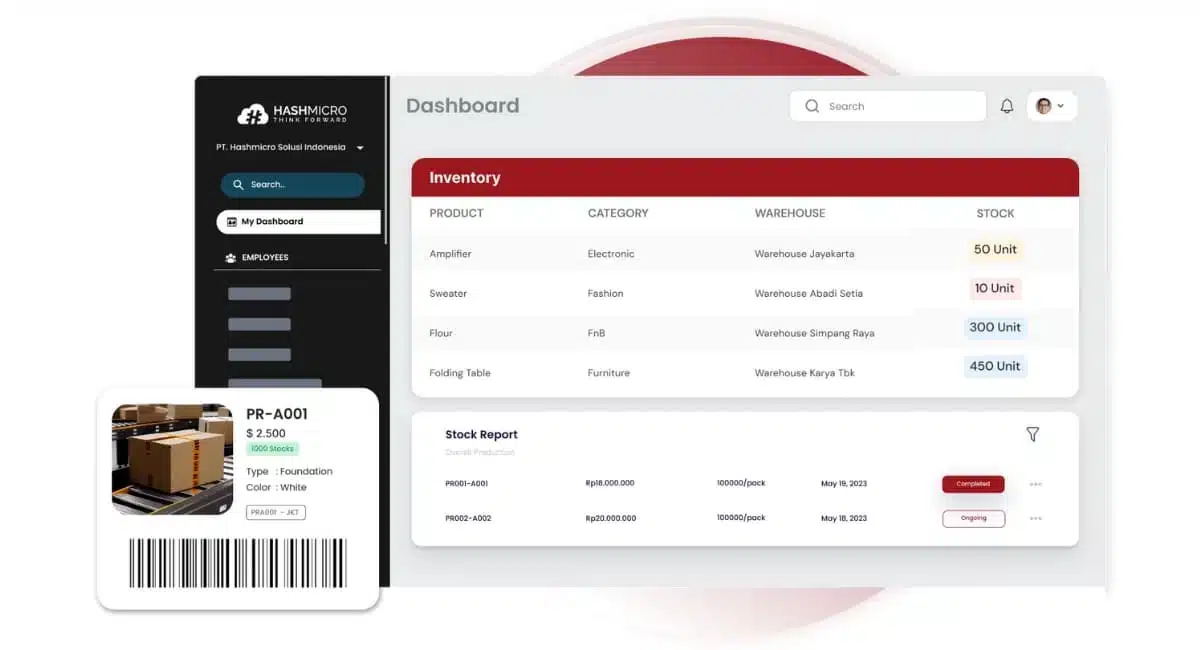Imagine, kababayan, if our retail businesses could reach peak efficiency and customer satisfaction. Picture a system that streamlines operations and boosts profitability. This isn’t just a dream—it’s a reality with effective retail inventory management, transforming your store in the Philippines by enhancing both operational efficiency and customer engagement.
Retail inventory management is fundamental to any successful retail operation. It involves diligently tracking and managing merchandise that flows in and out of your store, ensuring the right stock at the right time. This strategy prevents stockouts and surplus inventory while optimizing financial performance, making it a transformative approach for your retail business.
Dive deeper with us as we explore how mastering effective inventory management can revolutionize your business, ensuring competitiveness, responsiveness to customer needs, and financial stability in the fast-paced retail market.
Key Takeaways
|
Table of Contents

What is Retail Inventory Management?
Retail inventory management is crucial for ensuring the right products are available at the right time and in the right quantities. Additionally, it involves organizing, administering, and controlling the stock businesses sell to make a profit. Effective inventory management maintains the balance between too much and too little inventory, directly impacting operational efficiency and customer satisfaction.
The importance of inventory management in retail success cannot be overstated. It affects a business’s ability to serve customers efficiently, ensuring popular products are always in stock while avoiding excess inventory. By optimizing inventory, retailers reduce costs, increase turnover, and enhance the shopping experience, leading to higher customer loyalty and profitability.
Importance of Retail Inventory Management
Effective inventory management is crucial for retail businesses, especially in the competitive Philippine market. It controls operating costs and maintains a smooth flow of goods to and from the warehouse. By tracking inventory levels and analyzing inventory aging, retailers can make informed purchasing decisions, preventing excessive stock, minimizing holding costs, and avoiding the risks associated with obsolete inventory.
The key benefits of robust inventory management supported by inventory aging insights, include enhanced customer satisfaction through consistent product availability and improved profitability by reducing unnecessary overhead. Additionally, better cost control allows retailers to navigate the complex market dynamics and consumer preferences that characterize the Philippine retail landscape.
These advantages position retailers to remain competitive and responsive in a rapidly changing environment. By mastering inventory management and leveraging inventory aging data, businesses can align their operations with market demands, ensuring long-term success and customer loyalty.
Read also: Pharmacy Inventory Management System
Types of Retail Inventory
In retail, inventory is typically classified into five distinct categories, each requiring specific management techniques to ensure operational efficiency and customer satisfaction. These categories help in organizing the approach toward maintaining stock levels of finished goods, anticipating production needs, and fulfilling customer orders effectively.
- Raw Materials: Essential for production, these items need accurate forecasting to avoid delays.
- Work-in-Progress: Items that are in the process of being manufactured must be managed to ensure seamless production flows.
- Finished Goods: Completed products ready for sale, requiring precise tracking to manage supply effectively and avoid overstocking or stockouts.
- MRO (Maintenance, Repair, and Operations) Supplies: These are goods used in production and plant maintenance, like lubricants, tools, and cleaning supplies.
- Packaging: Materials used to wrap or protect goods during storage or shipment, needing regular stock checks to ensure availability.
Effectively managing these types of inventory is crucial. Proper control ensures that resources are utilized efficiently, waste is minimized, and the desired products are available to customers precisely when needed. This level of management not only meets customer demands but also significantly contributes to the overarching success of the business.
Steps in Retail Inventory Management
Managing retail inventory effectively is crucial for maintaining a smooth operation and excellent customer service. This process includes several key steps, each critical to ensuring accuracy and efficiency throughout the inventory lifecycle.
- Ordering: This should be guided by accurate sales forecasting and current inventory levels to avoid overstocking or stockouts.
- Receiving: Check deliveries against order forms and address any discrepancies immediately to ensure that the inventory received matches the order.
- Storing: Organize the cloud inventory system to allow for easy access and minimal handling, maintaining an orderly environment.
- Auditing: Regularly audit inventory to confirm the accuracy of records and identify any issues early, preventing potential impact on business operations.
By adhering to these steps, retailers can establish and maintain a robust inventory system that enhances operational efficiency and supports superior customer service. Furthermore, you can implement another software for maintaining smooth inventory management operations.
Inventory Management Techniques for Retailers
Inventory Analysis and Forecasting for Retailers
Inventory analysis and forecasting are crucial for retailers aiming to maintain optimal stock levels and respond effectively to changing market conditions. By analyzing past sales data, inventory turnover, and customer behaviors, retailers gain valuable insights into product performance and market trends.
This detailed analysis aids in making informed adjustments to inventory strategies. Leveraging advanced statistical methods and machine learning helps accurately anticipate demand fluctuations.
Integrating inventory management software significantly streamlines forecasting and strategic planning for retailers. This technology automates data analysis, providing real-time insights for quicker, more accurate decisions on stock levels and promotional strategies.
Moreover, it helps prevent overstocking and understocking by aligning inventory with anticipated demand. Synchronizing marketing efforts and staffing ensures competitiveness and profitability.
Best Practices in Retail Inventory Management
Optimizing inventory management is crucial for retail success, and a retail management system plays a vital role in ensuring efficiency and responsiveness to market dynamics. This strategic approach enhances operational performance and supports long-term growth.
- Establish Clear KPIs: Set specific key performance indicators (KPIs) to measure and monitor inventory performance, ensuring alignment with business goals.
- Maintain Strong Supplier Relationships: Cultivate reliable partnerships with suppliers to secure a stable supply chain and timely inventory replenishment.
- Manage Residual Inventory: Implement strategies such as discounts or special promotions to quickly move overstock and optimize warehouse space.
As market conditions and consumer behaviors evolve, continuous improvement becomes critical. Retailers must adapt their inventory management strategies to stay competitive and meet changing demands. Investing in technology and training not only streamlines processes and reduces errors but also enhances overall business efficiency and profitability.
Read More: Top Construction Inventory Management Software
Why Invest in HashMicro’s Inventory Management Software?
Choosing HashMicro’s Inventory Management Software means investing in a solution that stands apart from the rest. Unlike other inventory software, we prioritize our customers’ specific needs and challenges, designing our tools to simplify the inventory management process comprehensively.
Unique Selling Points of HashMicro’s Inventory Management Software:
- Real-Time Data Analytics: Provides immediate insights into inventory levels, sales trends, and customer preferences, allowing for quicker and more informed decision-making.
- Automated Forecasting: Utilizes advanced algorithms to predict demand accurately, reducing the risks of overstocking or stockouts and optimizing inventory levels.
- Seamless Integration: Easily integrates with existing ERP systems and e-commerce inventory system, ensuring a unified approach to inventory management across all sales channels.
- Customizable Alerts: Set up alerts for low stock levels or when it’s time to reorder, ensuring you never miss a sales opportunity due to inventory shortages.
- Comprehensive Reporting: Offers detailed reports on inventory performance, helping you understand which products are performing well and which are not, facilitating strategic decision-making.
Investing in HashMicro means more than just purchasing software; it’s embracing a partnership that supports your business’s growth. With robust features and reliable support, HashMicro empowers retailers to optimize inventory processes, reduce operational costs, and enhance overall performance. Choose HashMicro, where your success is prioritized, and operations are streamlined with cutting-edge technology.
Conclusion
Throughout this article, we’ve examined the essentials of retail inventory management, from its basic types and strategic techniques to the benefits of using advanced software solutions like HashMicro’s Inventory Management Software. By leveraging real-time analytics, automated forecasting, and comprehensive reporting, retailers can optimize operations, prevent stock issues, and enhance profitability.
HashMicro stands out by offering tailored features that cater specifically to the dynamic needs of the retail industry, ensuring you can efficiently meet market demands and maintain competitiveness. Embark on streamlining your retail operations by signing up for a free demo of HashMicro’s Inventory Management Software today!
Frequently Asked Questions
-
What are the 4 types of inventory management?
The four types of inventory management are perpetual, periodic, Just-In-Time (JIT), and ABC analysis. Each method offers different strategies for monitoring and managing stock to suit various business needs.
-
What is the retail inventory method?
The retail inventory method estimates the ending inventory balance using a cost-to-retail percentage. It helps retailers determine inventory value without a physical count by relating cost to sales.
-
How does inventory work in retail?
In retail, inventory management involves tracking, ordering, storing, and selling stock. It ensures products are available when needed, maximizing sales and minimizing overstock.

























